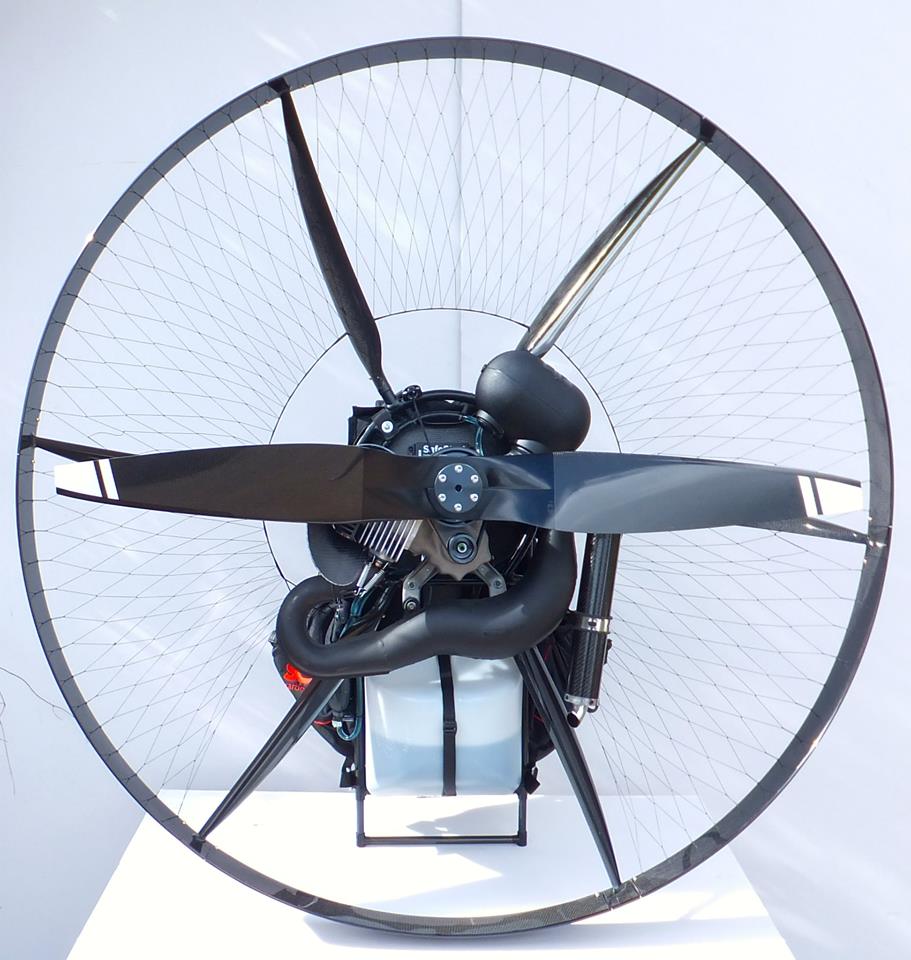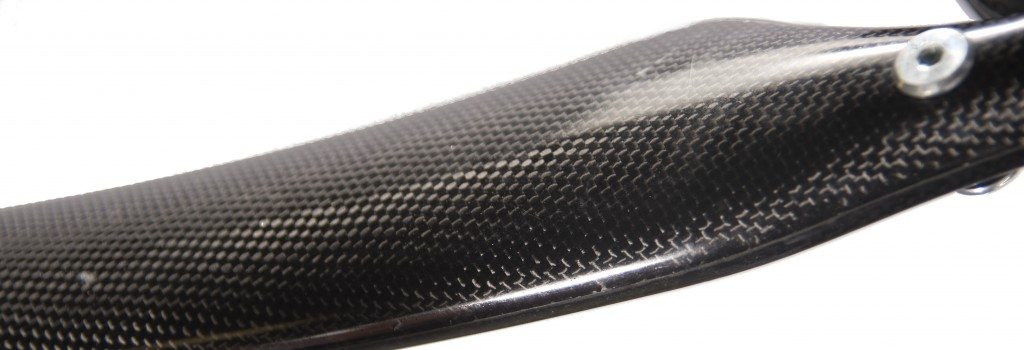Dynamic Torque Compensation
We've all learned to live with torque effect from our powered paragliders, especially high powered paramotors. Scout however has a solution to this problem; it's called Dynamic Torque Compensation. - patent pending.
Every aircraft with a rotating propeller creates torque effect. With Paramotors, this causes a swing to one side which in turn induces a turn. To counter act that, most pilots will add break (bad idea) or weight shift to the opposite side, helping to level out the craft and allow it to climb straight.
Scout has created a highly efficient propeller to reduce the torque effect to below the typical amount found on most paramotors. No matter what though, the torque effect will still be there. The faster the propeller turns, the stronger the torque effect will be. This is Physics, there is no way around it. Instead, Scout has engineered Asymmetric airfoil cage sections to compensate for the torque.
Scout has taken advantage of it's carbon fiber molding and adjusted the angle of each cage spar, engineering each as an asymmetric airfoil. By adjusting the angle of the cage spars airfoils, the air moving over the cage creates rotational lift. By doing this in a very precise manner, Scout has completely eliminated the torque effect. This allows for full power climb outs, without turning or torque twist. Dynamic Torque Compensation will help tremendously in the following flight scenarios:
Keeps the aircraft flying level when on full fast trim and speed bar.
No unintentional turning after full-power take-offs.
Equal turning capability to both sides even under full power!
Precision handling in slalom tasks
The SCOUT anti-torque design will work with many different engine setups. The frame is not designed after only one engine. As the prop speeds up, so does the airflow over the cage as the prop is "sucking air" over the aerodynamic spars. Regardless of airspeed, the design works as intended in a dynamic attitude. The more thrust you push out, the more the cage design counters it.
Aerodynamics
While we may fly one of the slowest forms of aviation, aerodynamics are still extremely important. Most of all of the advancements in aerodynamics have been to that cloth wing keep us in the air above us, leaving the paramotor neglected for years. We at Scout Paramotors decided it's time for a change.
Did you know that the standard tube used in other paramotors has 4 times more drag than an airfoil design? Did you know that a regular style paramotors decreases your glide ratio by 20-30%? The main issue behind this is the cage and netting which end up decreasing your airspeed and increasing your fuel burn.
The Scout Paramotor is made from carbon fiber and ever part of our cage is made to be as aerodynamically slippery as possible helping to decrease drag and allow you fly what we believe is the perfect paramotor.
Carbon Fiber Technology
High strength, low weight, stunningly beautiful.
Carbon fiber has some of the best strength to weight ratio of any material currently used in the powered paragliding industry
Carbon fiber gives us the ability to not be limited to tubes or other basic shapes typically used in the industry. It also allows us to create the most aerodynamically efficient cage sections with tons of strength.
The Scout allows pilots to have a lightweight paramotor without trading it for cage strength.
On the Scout, your back is well protected by a strong carbon shield. In case of an accident, the forces are well spread over the large surface of your back thus reducing the potential for spine damage.



